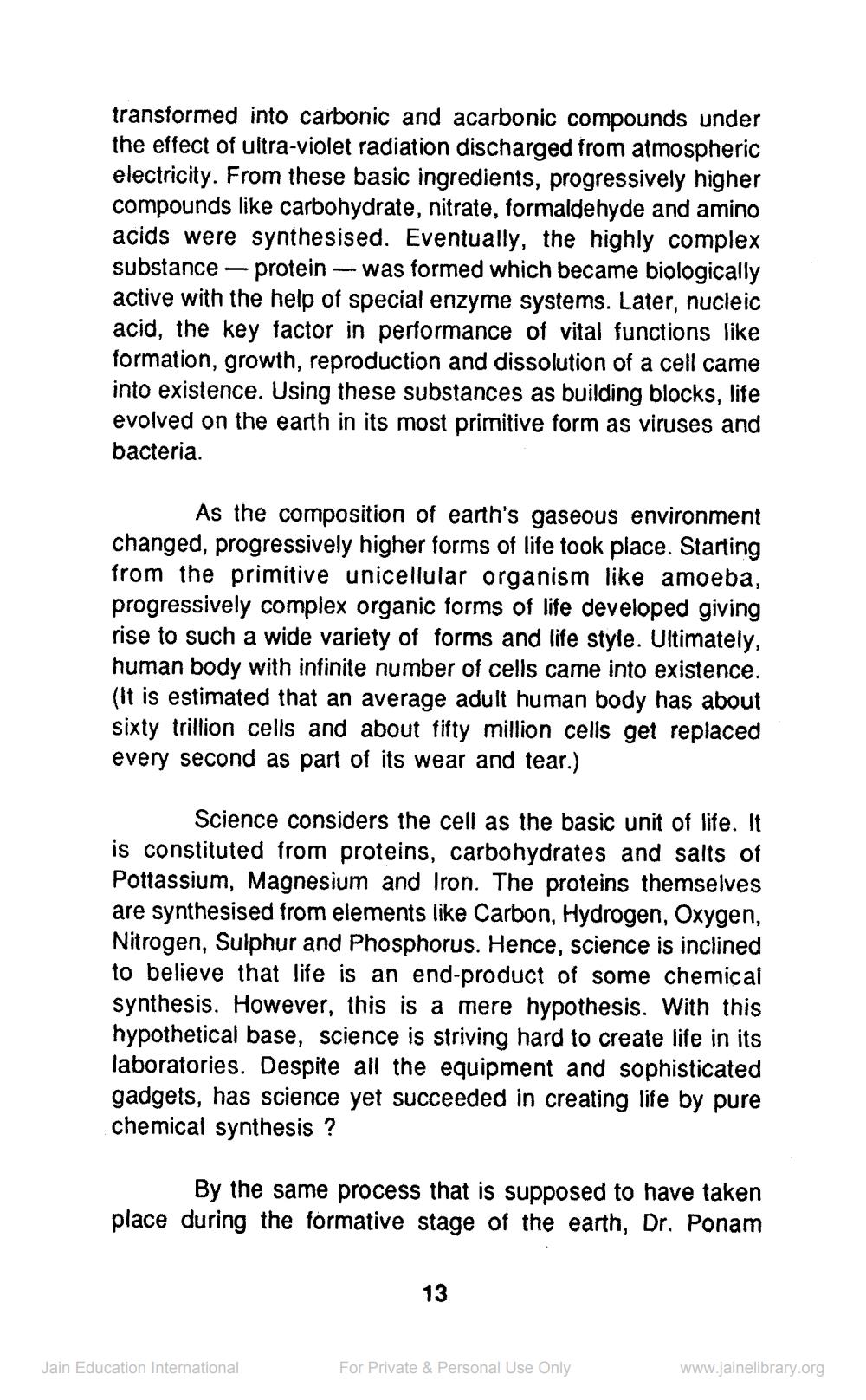________________
transformed into carbonic and acarbonic compounds under the effect of ultra-violet radiation discharged from atmospheric electricity. From these basic ingredients, progressively higher compounds like carbohydrate, nitrate, formaldehyde and amino acids were synthesised. Eventually, the highly complex substance — protein -- was formed which became biologically active with the help of special enzyme systems. Later, nucleic acid, the key factor in performance of vital functions like formation, growth, reproduction and dissolution of a cell came into existence. Using these substances as building blocks, life evolved on the earth in its most primitive form as viruses and bacteria.
As the composition of earth's gaseous environment changed, progressively higher forms of life took place. Starting from the primitive unicellular organism like amoeba, progressively complex organic forms of life developed giving rise to such a wide variety of forms and life style. Ultimately, human body with infinite number of cells came into existence. (it is estimated that an average adult human body has about sixty trillion cells and about fifty million cells get replaced every second as part of its wear and tear.)
Science considers the cell as the basic unit of life. It is constituted from proteins, carbohydrates and salts of Pottassium, Magnesium and Iron. The proteins themselves are synthesised from elements like Carbon, Hydrogen, Oxygen, Nitrogen, Sulphur and Phosphorus. Hence, science is inclined to believe that life is an end-product of some chemical synthesis. However, this is a mere hypothesis. With this hypothetical base, science is striving hard to create life in its laboratories. Despite all the equipment and sophisticated gadgets, has science yet succeeded in creating life by pure chemical synthesis ?
By the same process that is supposed to have taken place during the formative stage of the earth, Dr. Ponam
13
Jain Education International
For Private & Personal Use Only
www.jainelibrary.org




